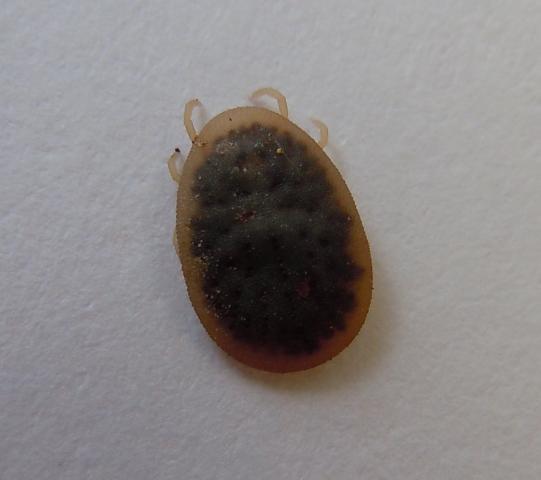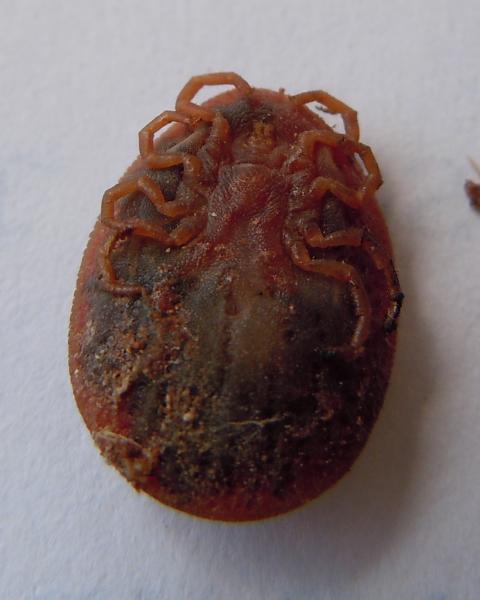Thank you all for this valuable information I'm going to be very busy this weekend cleaning the coop sealing the cracks and spraying. I very much appreciate all the info and input thank you again ! Anything new comes up please post !
Navigation
Install the app
How to install the app on iOS
Follow along with the video below to see how to install our site as a web app on your home screen.
Note: This feature may not be available in some browsers.
More options
You are using an out of date browser. It may not display this or other websites correctly.
You should upgrade or use an alternative browser.
You should upgrade or use an alternative browser.
Poultry ticks (Argas persicus) creepy coop ticks--check your crevices
- Thread starter Gallo del Cielo
- Start date
This is an old thread but I have been fighting ticks this summer. Lost one hen before I discover them. I was wondering if there is any new spray or whatever to kill these bugs? I used 3 different sprays so far including Spinosad, but they did not help. Somebody suggested Pandex, I have not used it yet.
Ah also, somebody asked how to treat 'blood donor' chicken. After losing a wonderful hen (which was my best broody) I found out Penicillin helps, except it is not available on the market here, neither in the vet stores, nor in human pharmacies. The only other product from this group is amoxicillin, so I am using it now.
@GallodelCielo85 do you still have a problem with Argus Persicus?
@plm6846 hi, are you still on this forum? I was wondering if you were able to completely get rid of the fowl ticks with Permethrin powder?
I am wondering what insect/animal EATS these bugs.... if there is another creature that eats the chicken ticks at night, I cant get the chicken out of the coop for one night, put another insect/animal there for the night to eat all ticks ... and then get the chicken back in..
I also made a trap - I put an old piece of wood and put it in the coop, so when the ticks finish sucking they would go and hide in this piece of wood. Then the next morning I burn that small piece of wood. I don't know if it works yet, but I am putting a new trap every night and burning it in the morning...
I am wondering what insect/animal EATS these bugs.... if there is another creature that eats the chicken ticks at night, I cant get the chicken out of the coop for one night, put another insect/animal there for the night to eat all ticks ... and then get the chicken back in..
I also made a trap - I put an old piece of wood and put it in the coop, so when the ticks finish sucking they would go and hide in this piece of wood. Then the next morning I burn that small piece of wood. I don't know if it works yet, but I am putting a new trap every night and burning it in the morning...
Yogagirlinaz
In the Brooder
In Phoenix and ugh so gross, what kind of crevice do you mean, like I have a gap where the roof attaches and that is way too big for caulk so do you mean like in between each board? Newbie chicken mom learning on the flyWhen I woke up this morning I had never heard of poultry ticks. I had been worried about a 9 month old BO that was loosing feathers. I'd been checking each bird weekly for parasites but had found none. This morning I decided to examine the coop closely to see if there were any suspicious bugs in there. I immediately found insect exoskeletons in the spider webs below the roosts and traced them to the crevice between the top two boards of my coop, immediately below the roosting area. I stuck my putty knife in the crevice and it came out covered in blood. At first I thought they were bed bugs. It fit the pattern of moving onto the prey at night and hiding in crevices below during the day. After I was able to photograph it and look at it with my glasses on I realized it wasn't a bed bug, but something else. I sent the pics off to the local guy (University of AZ Entomology) who knows all about bugs and he immediately responded that they were a member of the soft-bodied ticks (Argasidae) Argas persicus. I then spoke with the great folks at the University of Arizona Veterinary Diagnostics Lab. and they said they were very common all along the southern tier of the U.S. Most people may never realize they have them because they feed at night and hide during he day. I certainly had never heard of a tick that fed repeatedly like they do. He also said they are transported by wild birds. They suggested pyrethroids or organophosphates for control.
Here are the buggers:


By the time I figured out what they were, it was too late to do anything about them but I could learn as much as possible. Tonight I got into the coop at 6:40 pm, just about 10 min. after sunset. I scanned the entire coop continuously for three hours. I immediately spotted ticks on the wood parts of the roosts and moving out of the crevice. I killed 44 in the first hour and a half. In three hours I killed a total of 51 (almost none in the last half-hour). Here's what they do: I think they're waiting on the boards right at sunset when the birds come inside to roost (I missed this part). They quickly get onto the birds and over the next half hour to hour they crawl out of the crevice and try to get onto a bird. They feed for about 30 min. or so and then jump off the bird. Many, if not most of the ticks fall the 7'+ distance to the ground because most of the birds are now over the wire and not on the wood of the roost (my birds roost on wire). I put a white pillow case on the floor below the birds and could easily see them when they fell. They then crawl up the wall and back to the crevice. Most of the ticks (about 35) were found on the 2X4 immediately below the birds and had just come out of the crevice below that first board and were apparently seeking a bird. All of the ticks were found within 2' laterally of the birds and below. Most were found on the board the birds were standing on to get to the wire part of the roost. I found no ticks in any other part of the coop, run, nest boxes, feeders or places they like to dust bathe. The ticks that fell to the ground were not guaranteed safe return to the crevice. I saw several ticks killed by ground-dwelling spiders, ant lions and web building spiders. Some had fallen directly into the web and were eaten by the spiders below the chickens.
I've done some reading about these beasts and through my conversations with the experts, it seems that eliminating the crevice is crucial to controlling them. It sounds like they can't survive there without it. Tomorrow I'll seal up every crevice in the coop with DAP 230 clear sealant. The bad news about these guys is they can carry all sorts of poultry disease.
Here is a short description I found on the UC Davis Entomology web site about Poultry ticks (Argus persicus and A. sanchezi):
These ticks are common pests of chickens and turkeys, but generally do not cause serious problems except for small flocks on farms which provide wooden housing that encourages tick establishment. Eggs are laid in crevices in the wood. All stages of these ticks remain around the roosting area of poultry, hiding in crevices during the day and generally feeding at night. Ticks can survive in empty poultry housing for years. Argas sanchezi is a common tick of chickens, turkeys, and wild birds in California and other western states. In California it is primarily found in central valley dry climates from Shasta down to Kern county, as well as the dry coastal and inland southern California regions. Argas persicus infests chickens mostly in the eastern U.S., and only rarely has been collected in California in Nevada county (Furman and Loomis 1984).
I did some searches on BYC today and found some confusion about ticks out there. Apparently chickens eat a lot of ticks, but this particular tick usually evades their predatory abilities by feeding on the bird at night and hiding from them during the day. Their particularly creepy habit of sucking blood right after nightfall and hiding in crevices during the day make them all the more difficult for us to observe. I think a lot of people have had them, but never knew what they were. I hope this helps someone else out there.
New posts New threads Active threads
-
Latest posts
-
-
-
Disaster Themed Hatchalong and guess the hatch rate on scrambled shipped eggs
- Latest: Susan Skylark
-
-
-
-
Latest threads
-
30 chickens 1 rooster, 29 hens all bantams disappeared at once
- Started by bantams4ever2
- Replies: 0
-
Introducing Myself, the Wren of Wrens Grove
- Started by WrensGrove
- Replies: 2
-
-
Cockerell attached my pullet!
- Started by peafowl_Lover
- Replies: 3
-
-
-
Threads with more replies in the last 15 days
-
-
Ended BYC Poultry Caption Contest 11-07-25 Pic by kattabelly
- Started by TwoCrows
- Replies: 53
-
-
UPDATED serious flystrike
- Started by anomala
- Replies: 52
-
-
×



